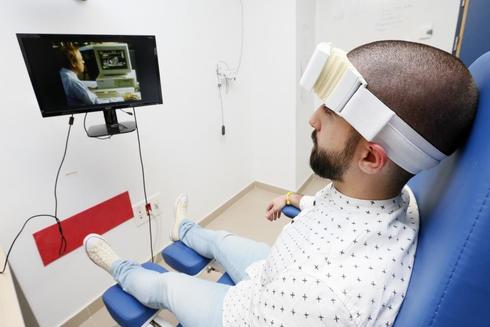Newmanbrain have created a very light and portable fNIRs device that is placed on the forehead to measure in real time the response of the brain to certain stimuli in adults or children. The new device can help psychologists in the diagnosis and treatment of people with attention deficit disorders, anxiety, hyperactivity or some type of phobia.

A new device makes it possible to evaluate brain activity in real time and in a simple way in response to motor, visual, auditory or cognitive stimuli, both in adults and children. And simply through a small device that, once placed on the forehead, as if it were a visor, detects the active brain areas and relates them to specific mental functions such as memory, stress or attention deficit. This is the result of work carried out over five years by scientists from the Institute of Neurosciences, who have created the company Newmanbrain in the Scientific Park of the Miguel Hernández University (UMH) in Elche.
Physically resembling virtual reality goggles, this lightweight, portable device uses infrared light spectroscopy, a non-invasive technique that accurately records brain activity in real time to assess a person’s cognitive or emotional functions, but in a very simple way. The objective, according to the CEO of Newmanbrain, Pablo Belmonte, is to help psychologists in the diagnosis and treatment of people with, for example, attention deficit disorders, hyperactivity, anxiety, dementia, phobias or even gambling problems.
In this way, the device allows psychologists to “objectify something that is nowadays subjective.” According to Belmonte, psychologists currently lack tools for diagnosis and for this reason, almost all their treatments are based on observation and experiences. But thanks to this system, depending on the situation of each patient, a certain part of the brain is activated with a certain intensity, which the device, as soon as it is placed on the forehead, is capable of measuring and quantifying, beyond the questions that can be asked the professional to his patient. “There is no one in Spain that applies this type of technology,” he says.
The different alterations that occur in the area of the brain are recorded on a computer, synchronized with the device via bluetooth, to later compare the results throughout the treatment and find out if it works. “The patient has a small control that he presses depending on the answers to certain questions, to see the areas of the brain that are activated.” In the case of a person who suffers from compulsive gambling, Belmonte points out, “we can very clearly observe how a part of the brain is activated when, for example, they are encouraged to play a game.”

But in addition to its use by psychologists, it can also be used by personnel evaluators, in human resources departments and even by the Police Forces. “Multiple applications can be found.”
The idea, according to Belmonte, was to develop a device that was “friendly” and, above all, light, like any of the gadgets that can be found on the market today, but, he points out, “giving it the medical rigor it requires.” “Our intention is that even a child can put it on and not feel like a laboratory rat.”
Belmonte points out that currently the most similar thing would be functional magnetic resonance, a large device that has a high spatial resolution to see how the brain works, but the temporal resolution is poor, he points out, something that does not happen with the Newmanbrain device, which is also small.
The first prototype of the device was built using a 3D printer. “One of the most wonderful inventions in recent years and that is revolutionizing everything,” he acknowledges, since this type of printing allows many tests to be carried out on the product, testing the coupling or design failures, at an affordable cost.
Although it may seem like a science fiction device, they are clear that it must be economically accessible to everyone. «We must adjust the price as much as possible so that it reaches a lot of people and they can have an instrument to evaluate. It is what we were born for, ”says Belmonte. The intention is to bring it to the market in just over a year, after five years of development, with the goal in mind that it can also be sold in the United States.
It has currently been tested on more than 500 people with all kinds of disorders, but also on people without any kind of pathology, and the results have been excellent. “Through this system, people with disorders are clearly seen.” Looking to the future, the bet is clear, to continue perfecting the device’s software, but at the same time working in a lighter second and with somewhat different physical characteristics. “The market will be marking us where we have to shoot.”
Source: https://www.elmundo.es/comunidad valenciana/alicante/2019/04/01/5c9fb2bf21efa0e93c8b4595.html
